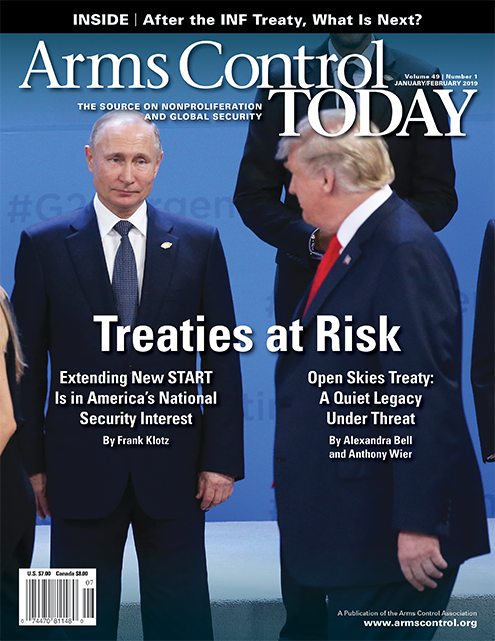"I greatly appreciate your very swift response, and your organization's work in general. It's a terrific source of authoritative information."
January/February 2019
Arms Control Today January/February 2019
Edition Date
Cover Image

Arms Control Today January/February 2019
